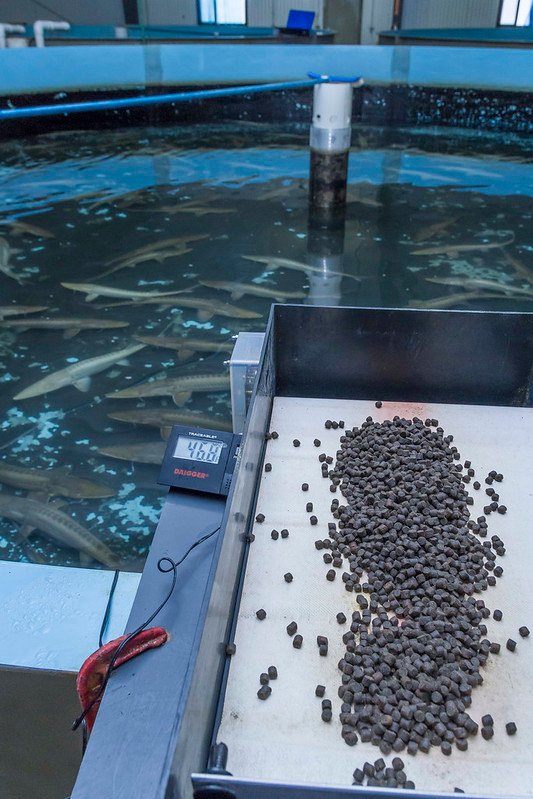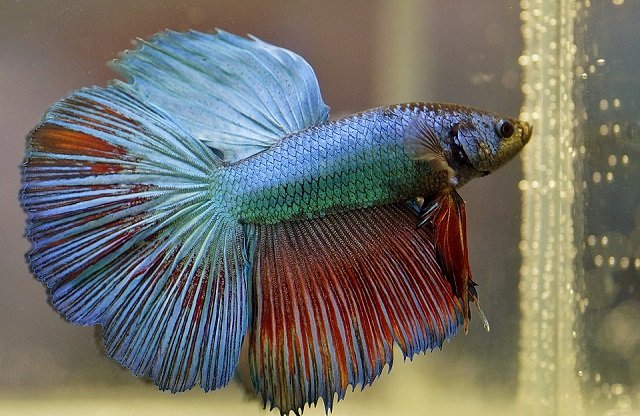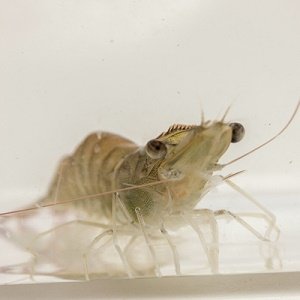
In modern Penaeus vannamei shrimp aquaculture, efficiency is everything. Optimizing feeding is one of the biggest challenges, as mismanagement not only wastes feed and money but also deteriorates water quality and increases the risk of disease. The industry is urgently seeking smart and precise feeding systems. A promising technology, passive acoustic monitoring (PAM), allows for “listening” to shrimp as they eat, but until now, these systems have often ignored a crucial factor: the pond environment.
A recent study published in the journal Animals has shed light on this gray area. Researchers used PAM technology to decipher how three key environmental factors—temperature, ammonia, and nitrite—modulate the feeding behavior and acoustic signals of Penaeus vannamei. The findings confirm that listening to shrimp is a powerful tool, but only if we also measure their environmental conditions.
How they “listened” to the shrimp: The methodology behind the sound
To understand the relationship between the environment and feeding, scientists from Ocean University of China, the Beijing Aquatic Product Technology Promotion Department, and the Max Planck Institute of Animal Behaviour designed a meticulous experiment. They used P. vannamei shrimp of approximately 8 grams and acclimated them in tanks under controlled conditions. Then, they created three different scenarios:
- Temperature gradient: Groups of shrimp were exposed to 20°C, 26°C (control), and 32°C.
- Ammonia gradient: Ammonia concentrations were adjusted to 4, 8, and 12 mg/L, in addition to a control group in natural seawater.
- Nitrite gradient: Similarly, shrimp were exposed to nitrite concentrations of 10, 20, and 40 mg/L.
For each condition, a passive acoustic monitoring (PAM) system equipped with hydrophones was used to record the sounds produced by the shrimp during feeding. Simultaneously, their behavior was video-recorded, and feed consumption was measured with precision. The study focused on the “clicks,” distinctive sounds that shrimp emit when eating, which are directly related to the amount of feed they ingest.
What the sounds and behavior revealed
The study showed a direct and stable correlation: the higher the feed consumption, the greater the number of “clicks” recorded. This relationship remained constant across all tested environments, validating the number of clicks as a reliable indicator of the shrimp’s feeding status.
Temperature: The great stimulant
Temperature was, by far, the most influential factor. As the water temperature increased from 20°C to 32°C:
- Feed consumption increased: It went from 0.46 g to 0.95 g in 30 minutes.
- Acoustic signals soared: The average number of “clicks” rose from 388 to nearly 2,948.
- Behavior changed: The shrimp became more active, spent more time feeding, and less time foraging or resting. At 20°C, many shrimp did not even reach the feeding tray, while at 32°C their activity was concentrated around the food.
Ammonia and nitrite: The appetite suppressors
Both ammonia and nitrite had a clear inhibitory effect on feeding.
- Effect of ammonia: A concentration of 12 mg/L of ammonia reduced feed consumption by 0.15 g and decreased “clicks” by more than 900 pulses compared to the control group. Behaviorally, shrimp in high concentrations of ammonia spent more time quiescent and less time feeding, showing a clear sign of stress.
- Effect of nitrite: Similarly, a concentration of 40 mg/L of nitrite also reduced feed consumption by 0.15 g and the number of “clicks” by over 300. Nitrite not only decreased feeding time but also increased the time shrimp spent swimming and resting, away from the food.
These findings suggest that the stress caused by nitrogen compounds forces the shrimp to reduce their intake to conserve energy, a survival strategy that directly impacts their growth.
Stay Always Informed
Join our communities to instantly receive the most important news, reports, and analysis from the aquaculture industry.
Implications for precision aquaculture: What does this mean for the producer?
This study is not just an academic exercise; it offers a roadmap for the future of smart feeding systems in shrimp aquaculture. The conclusions are clear and practical:
- The need for integrated systems: Automatic feeders based on PAM cannot operate in a vacuum. It is essential that they are integrated with real-time environmental monitoring modules. Ignoring temperature, ammonia, or nitrite can lead to overfeeding, resource waste, and a vicious cycle of water pollution.
- Temperature as the central axis: Given its enormous impact, temperature should be the first factor to consider when adjusting feed rations. A smart system should increase the amount of feed when the temperature rises (within the optimal range) and drastically reduce it when it drops, using acoustic signals to fine-tune the dosage.
- Early warning signs: High concentrations of ammonia and nitrite act as a brake on appetite. An integrated system should use this information to issue warnings and automatically reduce feeding when nitrogen levels rise, preventing the accumulation of uneaten feed and protecting the health of the crop.
In summary, the research confirms that passive acoustic monitoring technology is a viable and powerful tool for assessing the feeding status of shrimp under various conditions. However, its true potential will only be unlocked when the “ears” that listen to the shrimp are connected with the “eyes” that monitor water quality. This integrated approach is the next logical step towards a truly precise, sustainable, and profitable aquaculture.
Reference (open access)
Zhang, H., Yang, C., Li, Y., Ma, B., & Zhu, B. (2025). Environmental Factors Modulate Feeding Behavior of Penaeus vannamei: Insights from Passive Acoustic Monitoring. Animals, 15(14), 2113. https://doi.org/10.3390/ani15142113
Editor at the digital magazine AquaHoy. He holds a degree in Aquaculture Biology from the National University of Santa (UNS) and a Master’s degree in Science and Innovation Management from the Polytechnic University of Valencia, with postgraduate diplomas in Business Innovation and Innovation Management. He possesses extensive experience in the aquaculture and fisheries sector, having led the Fisheries Innovation Unit of the National Program for Innovation in Fisheries and Aquaculture (PNIPA). He has served as a senior consultant in technology watch, an innovation project formulator and advisor, and a lecturer at UNS. He is a member of the Peruvian College of Biologists and was recognized by the World Aquaculture Society (WAS) in 2016 for his contribution to aquaculture.




